How to Make Homemade Canned Saskatoons - Easily! With Step-by-step Photos, Recipe, Directions, Ingredients and Costs
 How to Make Home-canned Saskatoons and other Berries - Easily!
How to Make Home-canned Saskatoons and other Berries - Easily!
PDF Print version
Making and canning your own saskatoons is also quite easy. These directions may also be used with raspberries, blackberries, currants, dewberries, elderberries, gooseberries, huckleberries, tayberries, loganberries and mulberries. It doesn't work for strawberries; they are too soft. Instead, see this page for canning strawberries. If you prefer using a Pressure Canner, see this page.Here's how to make it, in 12 easy steps and completely illustrated. These directions work equally well for regular sugar, low sugar, fruit juice-sweetened and Stevia (in a prepared form like Truvia, it measures same as sugar; if you use another form, you will need do your own conversion) - or Splenda, if you prefer, -sweetened jam.
For more information about saskatoons, see Saskatoon Recipes, Information and Picking Tips.
Ingredients
- Fruit - fresh saskatoons - any quantity - the crunch down
some, so you will need about 1 and 1/4 pints raw per pint jar finished.
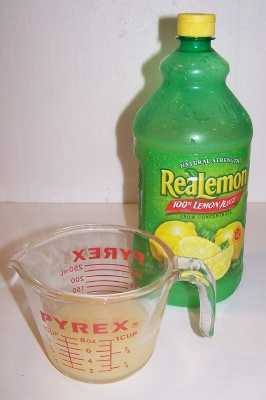
- Lemon juice - either fresh squeezed or bottled. Alternatively, Citric acid (brand name, fruit fresh).
- Sugar - About 3 cups of dry, granulated (table) sugar. See step 6. It is possible to make low-sugar, fruit juice-sweetened, or Stevia (in a prepared form like Truvia, it measures same as sugar; if you use another form, you will need do your own conversion) - or Splenda, if you prefer, -sweetened fig jam; I'll point out the differences below.
Equipment
- 1 large pot; I prefer 16 to 20 quart Nonstick ceramic coated pots for easy cleanup.
- Large spoons and ladles,
- 1 Water Bath Canner (a huge pot to sanitize the jars after filling (about $30 to $35 at mall kitchen stores, sometimes at big box stores and grocery stores.). Note: we sell canners and supplies here, too - at excellent prices - and it helps support this web site!
- Half pint canning jars (Grocery stores, like Publix, Kroger, Safeway carry them, as do some big box stores - about $7.50 per dozen pint ounce jars including the lids and rings)
- Jar funnel ($5 at Target, other big box stores, and often grocery stores; and available online - see this page) or order it as part of the kit with the Jar grabber .
- Lids - thin, flat, round metal lids with a gum binder that seals them against the top of the jar. They may only be used once.
- Rings - metal bands that secure the lids to the jars. They may be reused many times.
Optional stuff:
- Lid lifter (has a magnet to pick the lids out of the almost-boiling water where you sanitize them. ($4 at big box stores or it comes in the kit at left)
Jar grabber (to pick up the hot jars)- Big box stores and grocery stores sometimes carry them; and it is available online - see this page. It's a tremendously useful to put jars in the canner and take the hot jars out (without scalding yourself!). The kit sold below has everything you need, and at a pretty good price:
Saskatoon Canning Directions
This example shows you how to make canned saskatoons. The yield from this recipe is about 7 pint jars per 9 pints of raw berries.
Step 1 - Pick the saskatoons! (or buy them already picked)
It's fun to go pick your own and you can obviously get better quality ones!
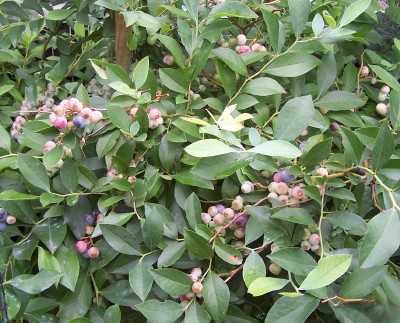 I
prefer to grow my own; which is really easy, don't require pesticides and
they make beautiful landscaping plants with red/gold leaves in the Autumn -
but that does take some space and time.
I
prefer to grow my own; which is really easy, don't require pesticides and
they make beautiful landscaping plants with red/gold leaves in the Autumn -
but that does take some space and time.
As mentioned in the Ingredients section; you may use frozen saskatoons (those without syrup or added sugar); which is especially useful if you want to make some jam in December to give away at Christmas!
Choose ripe, sweet berries with uniform color. At left are saskatoons almost ripe! If you want to pick your own, here is a list and links to the pick your own farms.
Step 2 - How much fruit?
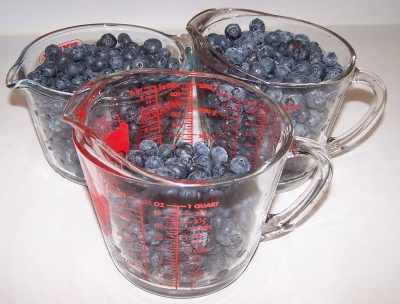 Canned
saskatoons can be made in large or small batches - you can can one jar at
a time if that's all you have.
Canned
saskatoons can be made in large or small batches - you can can one jar at
a time if that's all you have.
 Step
3 - Wash the jars and lids
Step
3 - Wash the jars and lids
Now's a good time to get the jars ready, so you won't be rushed later. The dishwasher is fine for the jars; especially if it has a "sanitize" cycle, the water bath processing will sanitize them as well as the contents! If you don't have a dishwasher with a sanitize cycle, you can wash the containers in hot, soapy water and rinse, then sanitize the jars by boiling them 10 minutes, and keep the jars in hot water until they are used.
NOTE: If a canning recipe calls for 10 minutes or more of process time in the canner, then the jars do not need to be "sanitized" before filling them. But really, sanitizing them first is just good hygeine and common sense! See this page for more detail about cleaning and sanitizing jars and lids.
Leave the jars in the dishwasher on "heated dry" until you are ready to use them. Keeping them hot will prevent the jars from breaking when you fill them with the hot jam. Some newer dishwashers even have a "sanitize" setting.
Step 4 - Get the lids warming in hot (but not boiling) water
Lids: put the very hot (but not quite boiling; around 180 F, steaming
water is fine)
water (or on the stove in a pot of water on low heat) for
at least several minutes; to soften up the gummed surface and clean and
sanitize the lids.

 Need
lids, rings and replacement jars?
Need
lids, rings and replacement jars?
Get them all here, delivered direct to your home, at the best prices on the internet!
Step 5 -Wash the berries and sort!
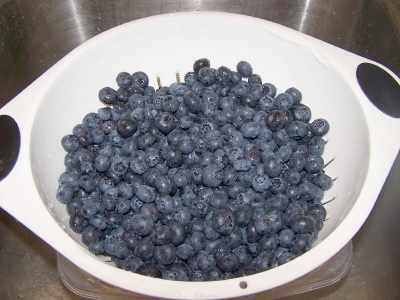 I'm
sure you can figure out how to wash the fruit in a colander of plain cold
water.
I'm
sure you can figure out how to wash the fruit in a colander of plain cold
water.
 Then
you need to pick out and remove any bits of stems, leaves and soft or
mushy berries. It is easiest to do this in a large bowl of water and
gently run your hands through the berries as they float. With your
fingers slightly apart, you will easily feel any soft or mushy berries get
caught in your fingers.
Then
you need to pick out and remove any bits of stems, leaves and soft or
mushy berries. It is easiest to do this in a large bowl of water and
gently run your hands through the berries as they float. With your
fingers slightly apart, you will easily feel any soft or mushy berries get
caught in your fingers.
Then just drain off the water!
Step 6 - Make and heat the syrup
 Depending
upon whi
Depending
upon whi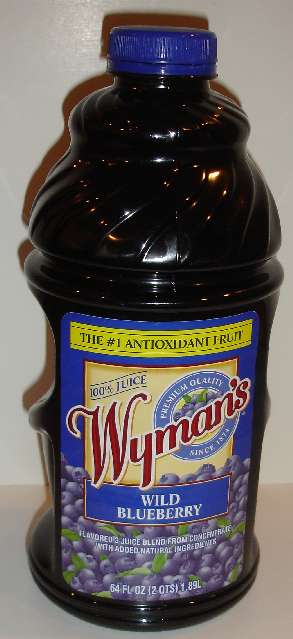 ch
type of sweetener you want to use (sugar, no-sugar, Stevia (but you will have to experiment with amount, each brand of Stevia is a different
concentration), or Splenda, or a mix of sugar and Stevia (or Splenda) or fruit juice) you will need to use a different syrup
from below. Adding syrup to canned fruit helps to retain its flavor, color,
and shape. It does not prevent spoilage of these foods. Heat the syrup to
near boiling in a pot.
ch
type of sweetener you want to use (sugar, no-sugar, Stevia (but you will have to experiment with amount, each brand of Stevia is a different
concentration), or Splenda, or a mix of sugar and Stevia (or Splenda) or fruit juice) you will need to use a different syrup
from below. Adding syrup to canned fruit helps to retain its flavor, color,
and shape. It does not prevent spoilage of these foods. Heat the syrup to
near boiling in a pot.
Most people prefer the medium syrup (highlighted) or saskatoon juice with added sugar!
|
Sugar syrup proportions for 7 to 9-pint jars of saskatoons (double it for 9 quart jars) |
|||||
| Type of syrup (Choose ONE) |
Water (cups) |
Fruit juice (cups) |
Sugar (cups) |
Powdered Splenda, or Stevia | |
|---|---|---|---|---|---|
| 1 | Plain water | 7 | 0 | 0 | 0 |
| 2 | no calorie sweetener | 7 | 0 | 0 | 1/4 cup |
| 3 | Fruit juice (white grape or peach juice works well) | 0 | 7 | 0 | |
| 4 | Reduce calorie / fruit juice | 4 | 3 | 0 | |
| 5 | Fruit juice and Stevia (in a prepared form like Truvia, it measures same as sugar; if you use another form, you will need do your own conversion) - or Splenda, if you prefer, | 0 | 7 | 0 | 1/2 cup |
| 6 | very low calorie | 7 | 0 | 1/4 | 1/4 cup |
| 7 | very light (10% sugar) | 7 | 0 | 1 | 0 |
| 8 | light (20% sugar) | 6 | 0 | 2 | 0 |
| 9 | medium (30% sugar) | 6 | 0 | 3 | 0 |
- Nutrasweet (aspartame) will NOT work - it breaks down during heating).
- Stevia (in a prepared form like Truvia, it measures same as sugar; if you use another form, you will need do your own conversion) - or Splenda, if you prefer, (sucralose) substitutes exactly with sugar BUT even the manufacturers of Splenda will tell you that you get best results if you just use a 50-50 mix; half regular sugar and half Stevia (in a prepared form like Truvia, it measures same as sugar; if you use another form, you will need do your own conversion) - or Splenda, if you prefer, .
- Sugar not only affects the sweetness, but also the color and flavor. It does not affect the preserving or spoilage properties - that has to do with acid and the processing method.
Step 7 - Add the natural preservative to the jars
Add 2 tablespoons bottled lemon juice per quart jar or 1 tablespoon per pint jar to each of the jars. Alternatively, you may add 1/2 teaspoon citric acid (also goes under the brand name "fruit fresh") per quart or 1/4 teaspoon per pint to the jars. This is to increase the acidity and help prevent discoloration and spoilage.
Step 8 - Fill the jars with saskatoons
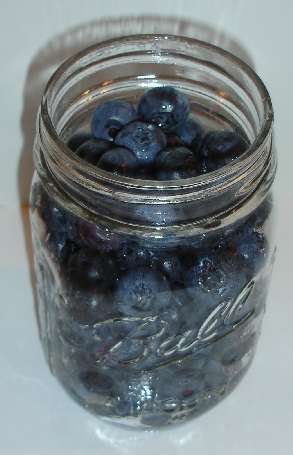 Fill
jars with saskatoons, gently tapping the bottom of the jar on the
countertop to help pack the saskatoons down gently (tapping does it
without breaking the saskatoons).
Fill
jars with saskatoons, gently tapping the bottom of the jar on the
countertop to help pack the saskatoons down gently (tapping does it
without breaking the saskatoons).
Note about "hot packing" vs. "raw packing". You may have noticed that some recipes or canning directions call for the berries to be heated in a pot of boiling water for 30 seconds to several minutes before filling the jars. That is the 'hot pack" method. We're using the "raw pack" method (no preheating) because most berries are delicate and would be adversely affected by the preheating, and being small, it isn't needed to ensure uniform heating in the canner!
Step 9 - Fill the airspace in the jars with syrup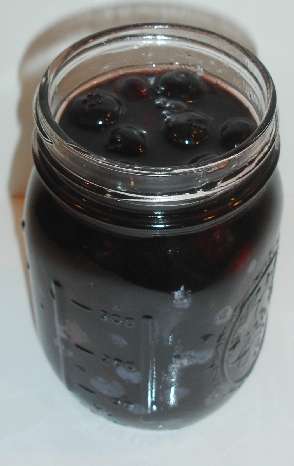
Add the hot syrup from step 6, leaving 1/2-inch headspace. Wipe any spills jam off the rim of the jar.
Note: saskatoons vary considerably in moisture content. There may be swelling of the berries, which can cause overflow, or they may absorb more of the syrup, which can cause loss of liquid. The half inch headspace is recommended by Ball and the National Center for Home Food Preservation at the University of Georgia. But you may find that you need to increase it to as much as 3/4 inch.
Step 10 - Put the lid /rings on and put in the canner
 Seat
the lid and tighten the ring around them. This is where the jar
tongs and lid lifter come in really handy! Place them into the canner
Seat
the lid and tighten the ring around them. This is where the jar
tongs and lid lifter come in really handy! Place them into the canner
 Step
13 - Process the jars in the canner (either boiling water bath or pressure
canner)
Step
13 - Process the jars in the canner (either boiling water bath or pressure
canner)
You can use either a water bath canner or a Pressure Canner, since there is sufficient acidity in berries. These directions are for the water bath. For the pressure canner directions, click here. In the water bath canner, keep the jars covered with at least 2 inches of water. Keep the water boiling.
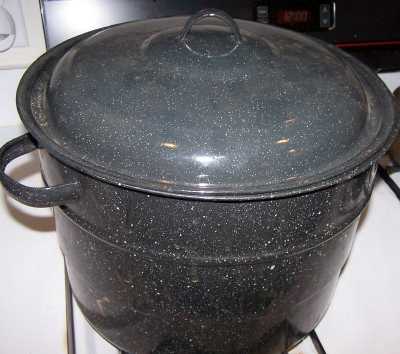 The
processing times are shown in the table below!
The
processing times are shown in the table below!
To adjust, process according to the recommendations in the table below:
|
Recommended process time for raw pack Saskatoons
in a
|
||||
| Process Time at Altitudes of | ||||
| Jar Size | 0 - 1,000 ft | 1,001 - 3,000 ft | 3,001 - 6,000 ft | Above 6,000 ft |
| Pints | 15 min | 20 | 20 | 25 |
| Quarts | 20 min | 25 | 30 | 35 |
Step 14 - Remove and cool the jars - Done!
 Lift
the jars out of the water in the water bath canner (wait till pressure
is zero in a Pressure Canner) and let them cool without touching or
bumping them in a draft-free place (usually takes overnight) You can
then remove the rings if you like, but if you leave them on, at least
loosen them quite a bit, so they don't rust in place due to trapped
moisture. Once the jars are cool, you can check that they are sealed
verifying that the lid has been sucked down. Just press in the center,
gently, with your finger. If it pops up and down (often making a popping
sound), it is not sealed. If you put the jar in the refrigerator right
away, you can still use it. Some people replace the lid and reprocess
the jar, then that's a bit iffy. If you heat the contents back up,
re-jar them (with a new lid) and the full time in the canner, it's
usually ok.
Lift
the jars out of the water in the water bath canner (wait till pressure
is zero in a Pressure Canner) and let them cool without touching or
bumping them in a draft-free place (usually takes overnight) You can
then remove the rings if you like, but if you leave them on, at least
loosen them quite a bit, so they don't rust in place due to trapped
moisture. Once the jars are cool, you can check that they are sealed
verifying that the lid has been sucked down. Just press in the center,
gently, with your finger. If it pops up and down (often making a popping
sound), it is not sealed. If you put the jar in the refrigerator right
away, you can still use it. Some people replace the lid and reprocess
the jar, then that's a bit iffy. If you heat the contents back up,
re-jar them (with a new lid) and the full time in the canner, it's
usually ok.
Once cooled, they're ready to store. I find they last about 18 months. After that, the get darker in color and start to get runny. They still seem safe to eat, but the flavor is bland. So eat them in the first 12 to 18 months after you prepare them!
Other Equipment:From left to right:
|
 You can get all of the tools in a kit here: See here for related tools, equipment, supplies on Amazon |
Summary - Cost of Making Home Canned Saskatoons - makes 7 pint jars, 16 oz each** |
||||
| Item | Quantity | Cost in 2025 | Source | Subtotal |
| Saskatoons | 5.5 lbs (about 1 gallon) | $11.00/gallon | Pick your own | $11.00 |
| Canning jars (16 oz size), includes lids and rings | 7 jars | $9.50/dozen | Grocery stores, like Public, Kroger, Safeway and sometimes, Big Lots, local hardware stores and big box stores | $5.54 |
| Sugar | 1 cup | $0.75 | Grocery stores, like Public, Kroger, Safeway and sometimes, Big Lots, local hardware stores and big box stores | $0.75 |
| Total | $17.29 total or about $2.47 per pint jar |
|||
|
* - This assumes you already have the pots, pans, ladles,, and reusable equipment. Note that you can reuse the jars! If you already have jars or reuse them, just buy new lids (the rings are reusable, but the flat lids are not)! |
||||


